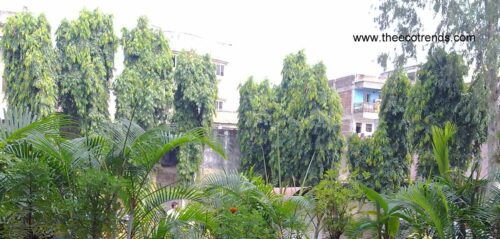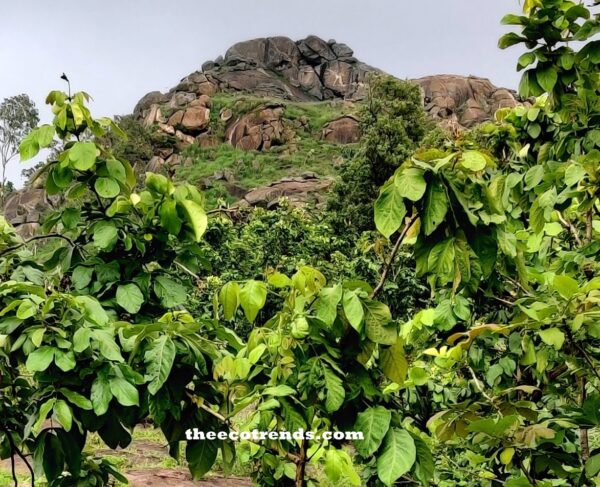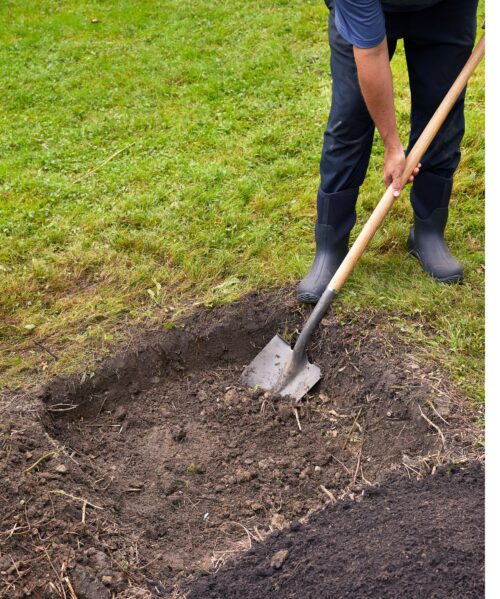The environment has two basic components: Biotic and Abiotic. The biotic components of an ecosystem are living beings—plants, animals, and microorganisms. These components remain linked in terms of food and energy. Energy binds molecules of food items, and food moves through different ecosystem organisms, carrying that energy. Thus, what matters here too much is food and energy.
All the biotic components are linked directly or indirectly through food- relations. Hence, we classify all the biotic components of the environment based on their food relationships or nutritional relationships into three categories. These categories are known as Trophic Levels. An atrophic level is a group of particular organisms with similar nutritional patterns when preparing their own food. An ecosystem has three trophic levels: Producers, Consumers, and Decomposers.
A. PRODUCERS are living beings that can make food on their own. All green plants are called Producers as they synthesize their food by combining carbon dioxide and water in sunlight. The process of food synthesis by green plants using carbon dioxide and water in the presence of sunlight is called Photosynthesis. Oxygen is given out in the process as a by-product.
Sunlight is the source of energy for green plants. They utilize this radiant energy in photosynthesis and store it as chemical binding energy between the molecules of their food.
B. CONSUMERS are living beings who cannot synthesize food independently and depend on others for it. All living beings other than producers are consumers, directly or in a roundabout sense.
Some consumers eat plants and plant products. They are called consumers of the First Order or Primary Consumers Herbivores. Snails, rabbits, grasshoppers, goats, deer, horses etc fall under this category.
Consumers feeding on herbivores are called secondary consumers or carnivores. These may either be Predators or Parasites. Predators are hunters like hawks, tigers, leopards, panthers etc. Parasites are those consumers who derive food from other living beings through their own tricks, either by living inside the bodies of their hosts or by living outside.
Some living beings depend on secondary consumers for their food requirements and those organisms may be called as Tertiary Consumers or Omnivores. Of course, many humans are omnivores, while others are dogs, sparrows, crows, cats, cockroaches, etc.
C. DECOMPOSERS are living beings of an ecosystem or the biotic components that tend to decompose or break down the dead bodies of plants and animals into simpler forms. Numerous species of bacteria, fungi, nematodes, insects, and even earthworms are considered decomposers as they derive their food from decomposing dead bodies of plants and animals.
In an ecosystem, decomposers are considered very important as they help us get rid of all the decomposable generated everywhere. Decomposers are also called Saprotrophs because they eat away dead bodies and their parts.
Abiotic Components means “non-living components” of an ecosystem. These include rocks and soil, water, air, and environmental factors like temperature, sunlight, humidity, etc.
Rocks and soils contain organic and inorganic substances. Organic substances are carbon compounds like carbohydrates, fats, proteins, etc. These compounds remain present inside the bodies of plants and animals and get mixed into soils after the decomposition of dead body parts of plants and animals.
Inorganic substances are minerals like calcium, phosphorus, Sodium, Iron, Magnesium, etc. that remain present in soils, rocks, etc. and are absorbed by the plant roots.
Environmental factors like sunlight, temperature, etc., decide climate and weather conditions. These are essential for the survival and development of living beings in an ecosystem. Among abiotic components, the structure and composition of soils, together with their physical and chemical characteristics, are called Edaphic Factors.
An ecosystem is a group of living organisms interacting with their environment. Ecosystems can be very small, or they can be as large as the Sahara. A pond, a rotting log, grassland, a crop field, etc, are examples of ecosystems.
Very large ecosystems or a series of smaller ecosystems scattered around that have common plants, animals, and qualities are called biomes.
There are many biomes: terrestrial (on land) and marine (water). Desert, savannah, tundra, or tropical forest are other biomes. Animals and plants live in the ecosystems and biomes that they do because of their Ranges of Tolerance. A Range of Tolerance is the variation a plant or animal can accept in such things as water or temperature. For example, some plants need a lot of water to survive, while others need very little.




